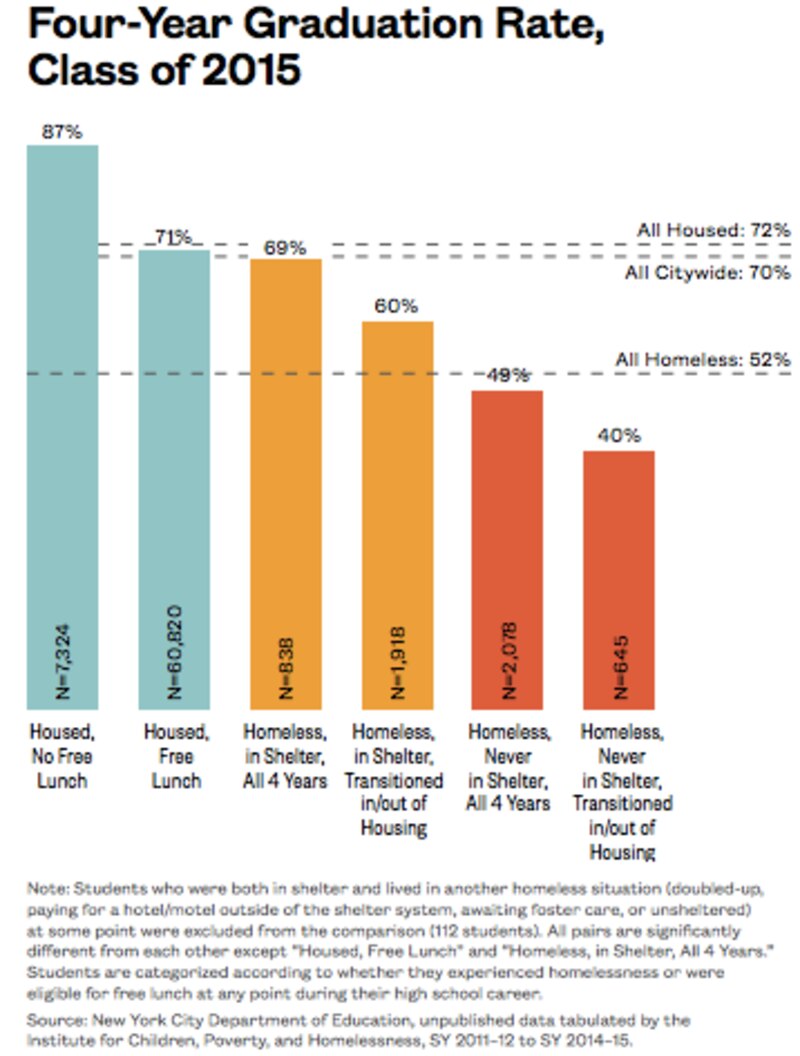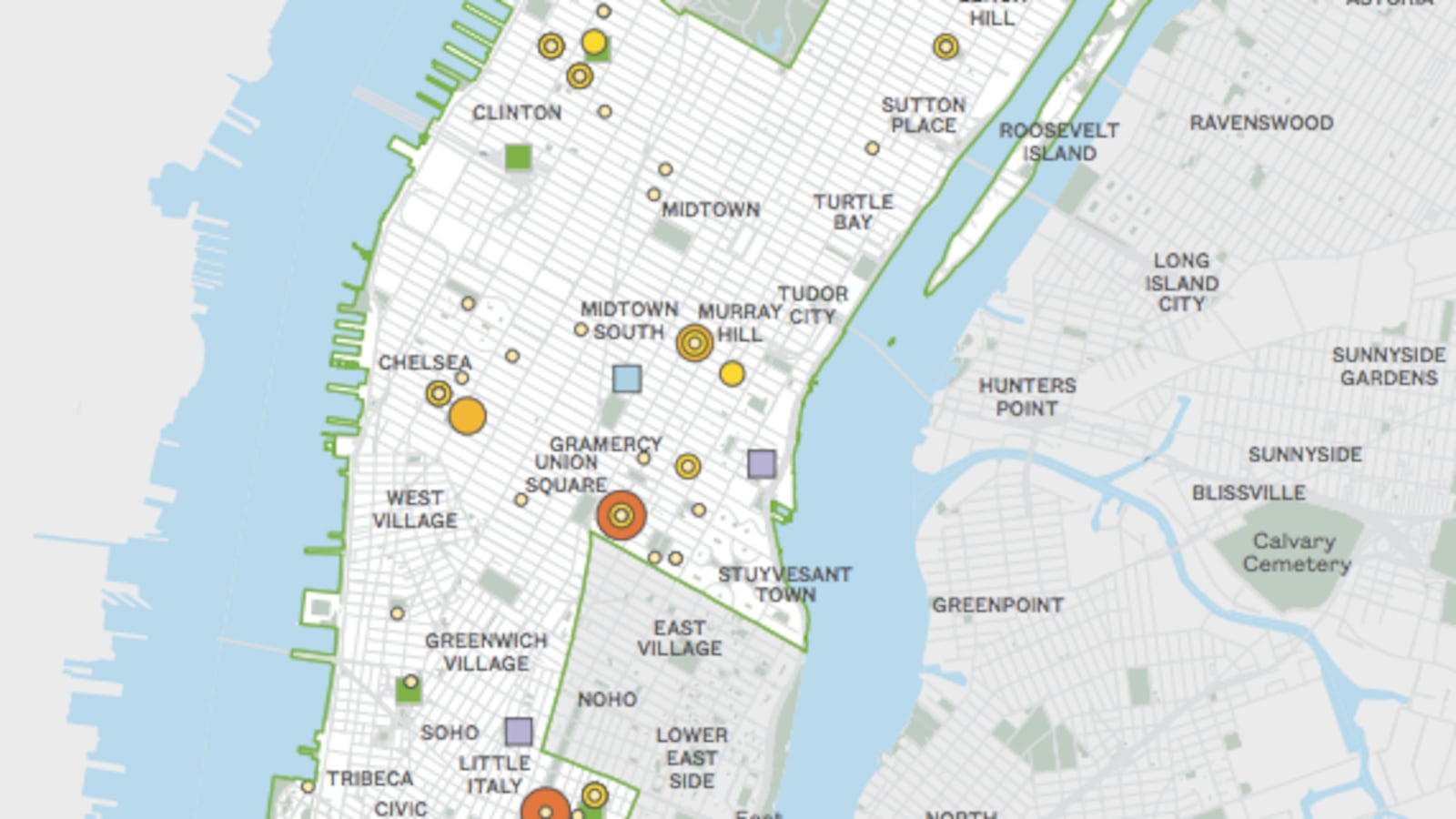About 127,000 New York City public school students — or one in eight — have been homeless at some point in the last five school years, more than the total population of Boston and Seattle’s school systems combined. The effect of housing instability and poverty on those students is immense and is detailed in a report released Wednesday by the Institute for Children, Poverty, and Homelessness — a New York-based nonprofit.
The report is notable partly because it reveals that students who have experienced homelessness in the past, but have since found stable housing, struggle almost as much as their homeless peers. “We can’t just think about it as a point-in-time event,” said Jennifer Erb-Downward, a policy analyst who worked on the report. “We need to think about the life course of a student and the effect homelessness has.”
And while the report offers a bleak view into what it means to be a homeless student, there are also some bright spots. Here are nine key graphs:
1. For the first time in the last five years, the number of homeless students dropped slightly, but it is still much higher than it was five years ago.
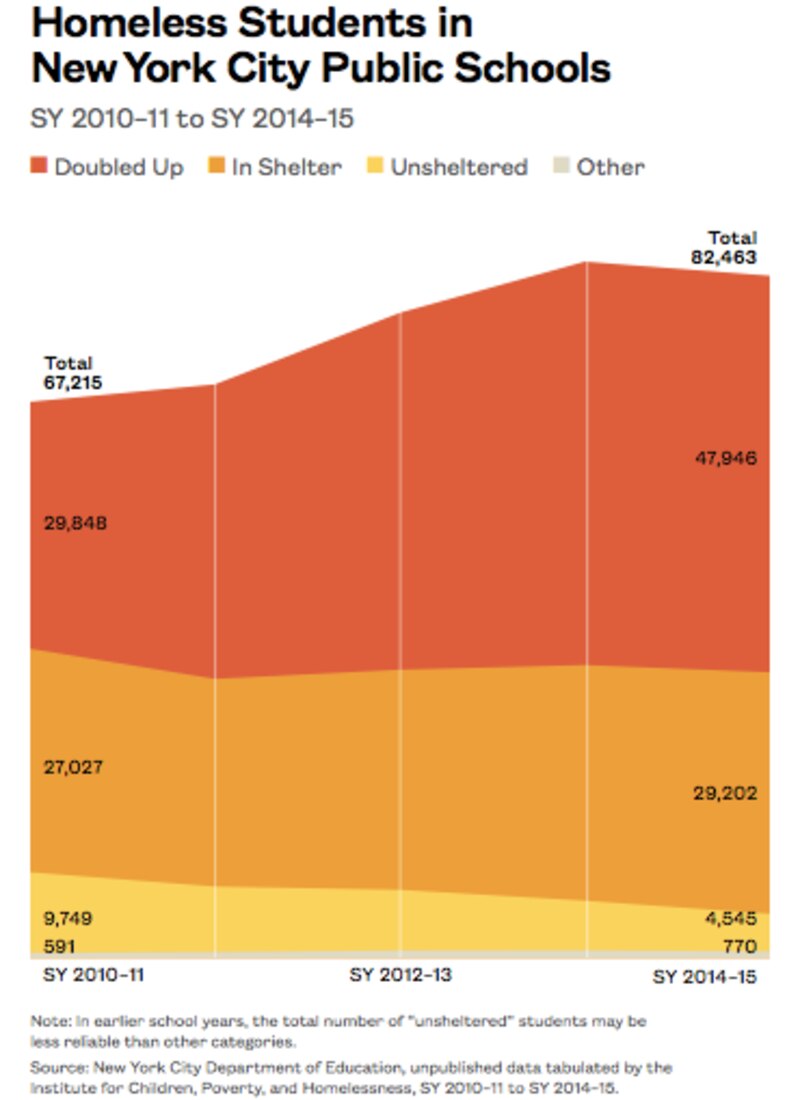
2. Among the city’s homeless students, more than two-thirds also experienced homelessness during a previous school year.
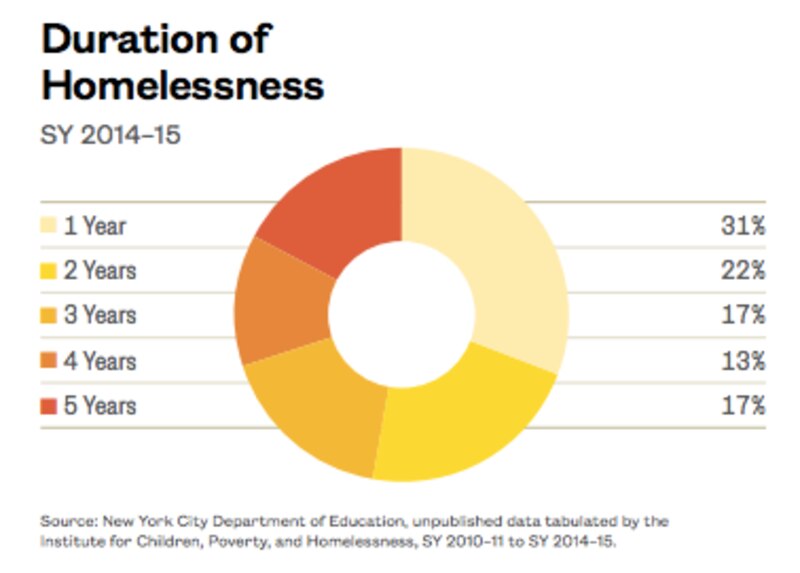
3. The city’s homeless students skew young. In the 2014-2015 school year, 38 percent of them were in pre-k through second grade.
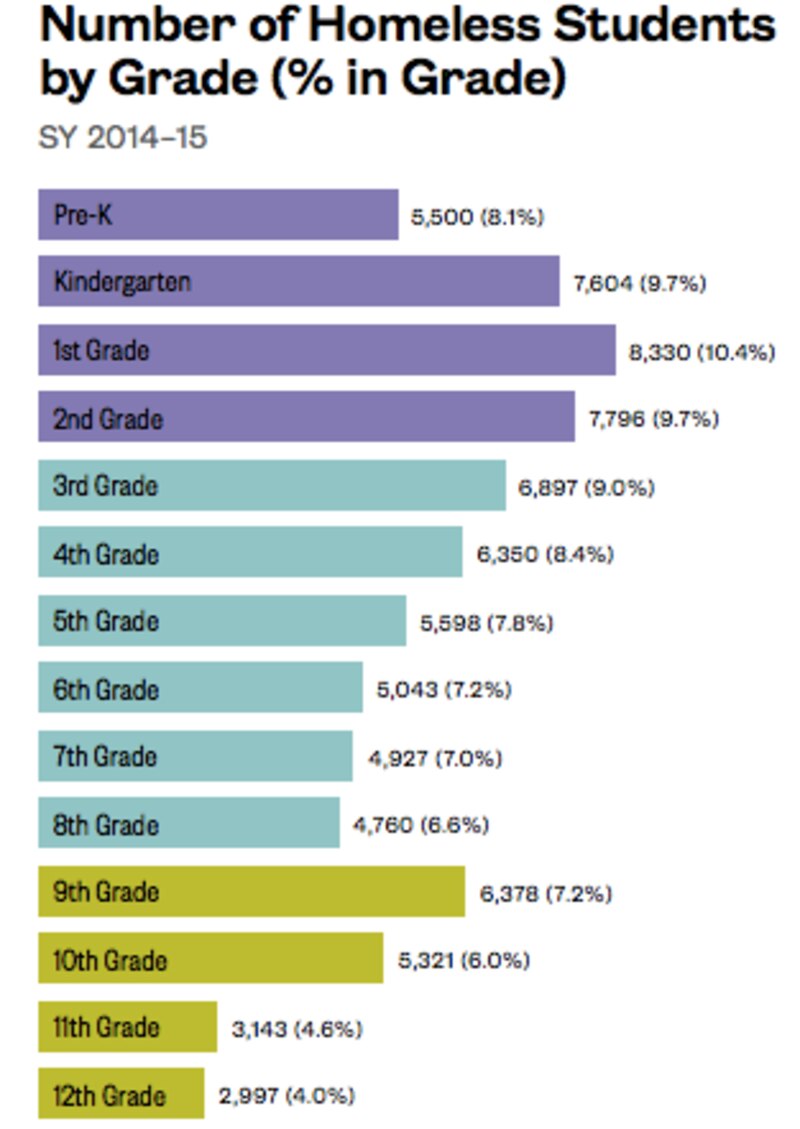
4. Formerly homeless students’ proficiency on state tests is remarkably similar to that of their currently homeless peers, which suggests that unstable housing can affect school performance for years.

5. Homeless students were more likely than non-homeless students to be suspended.
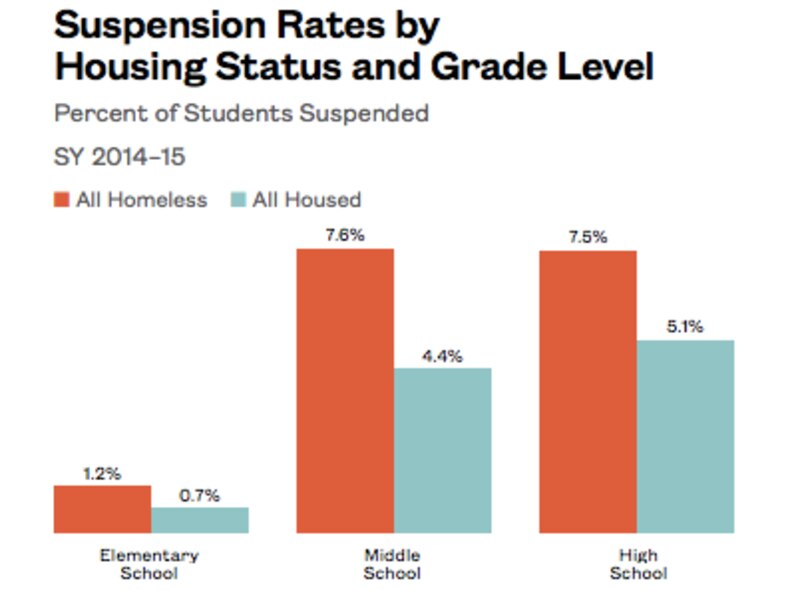
6. The city’s homeless population is highly concentrated. Almost 20 percent of homeless students, or 15,000 of them, live in Bronx Districts 9 and 10.
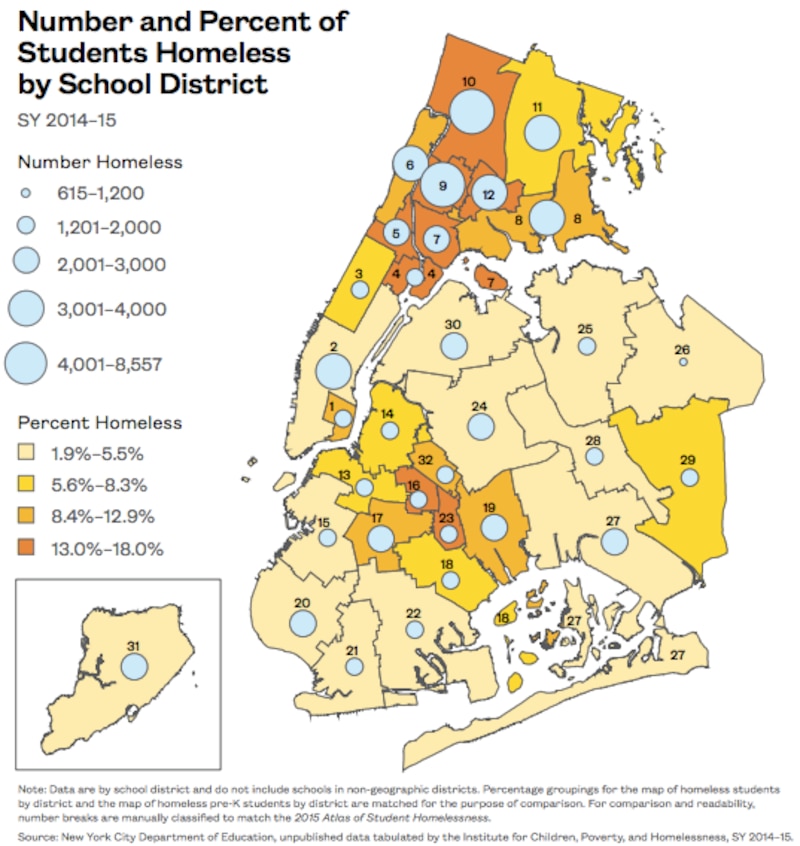
7. Housing instability correlates with instability in school — the homeless student population is much more likely to transfer mid-year.
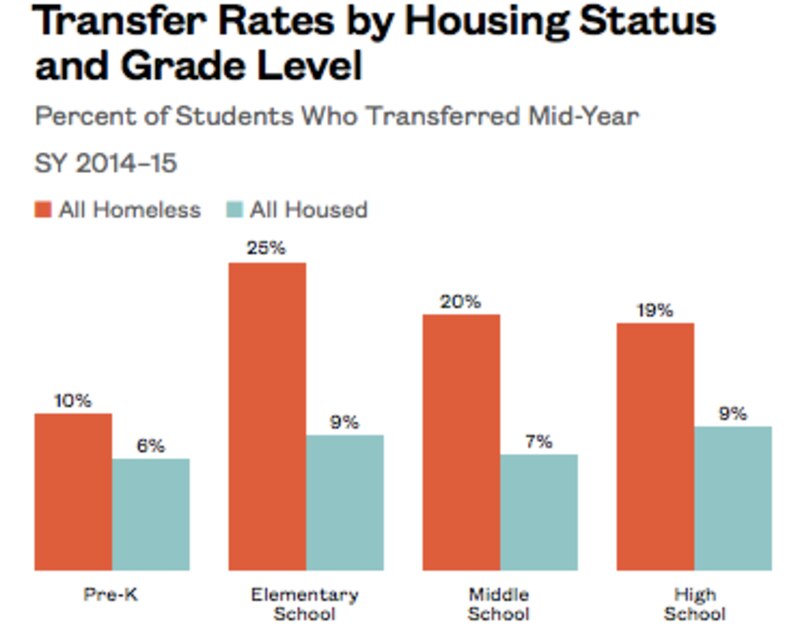
8. Just 37 percent of homeless students with an individual learning plan had their disability identified by the end of kindergarten, compared with 50 percent of their housed peers. That’s important because homeless students whose disabilities are identified early are much more likely to be on grade level, and less likely to be suspended.
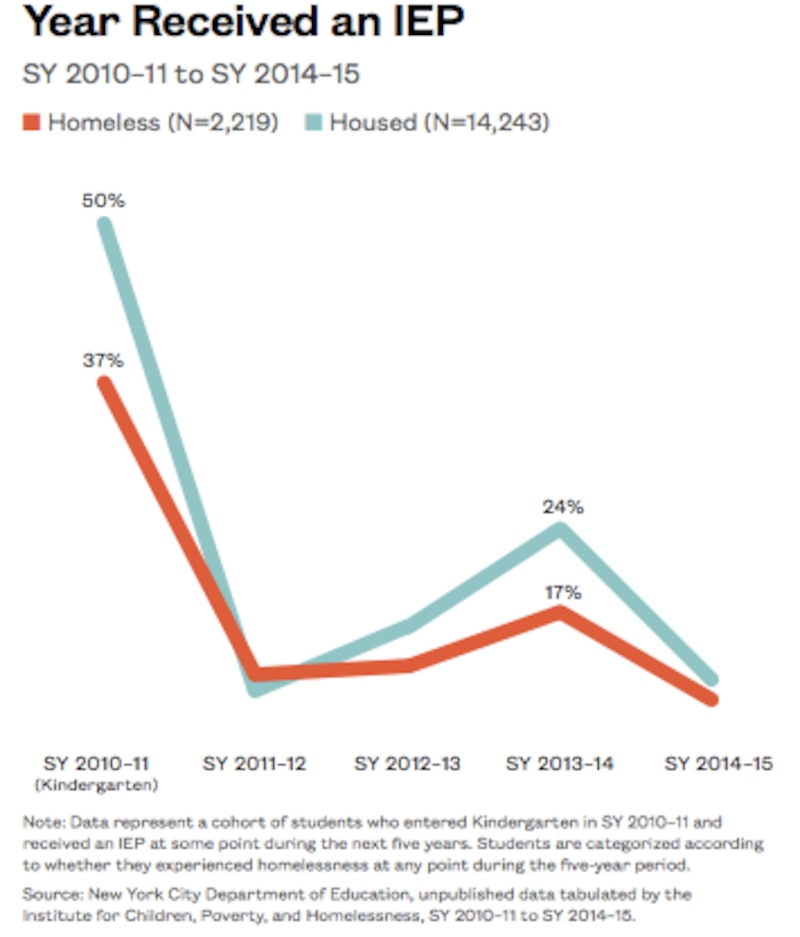
9. Still, there are bright spots. Those who live in shelters for all four years of high school graduate at similar rates as their low-income peers who are housed, a fact one of the report’s contributors said warrants further study.
